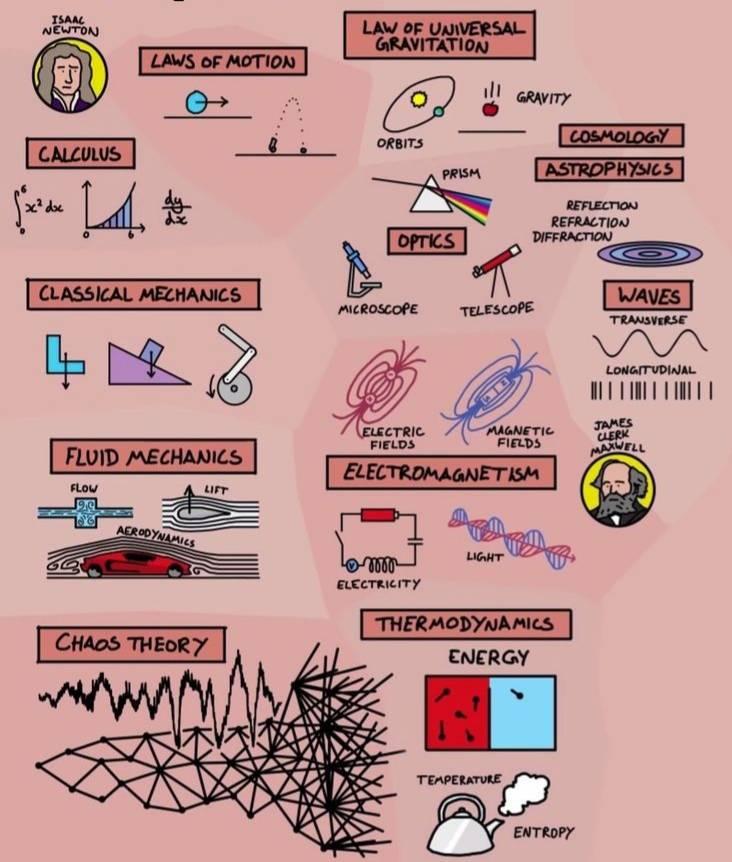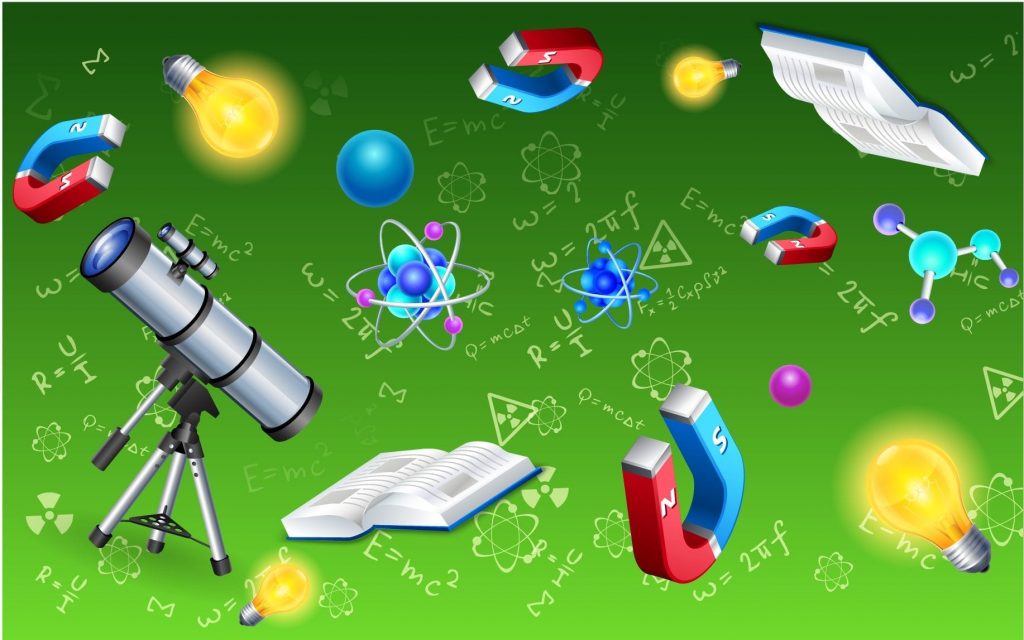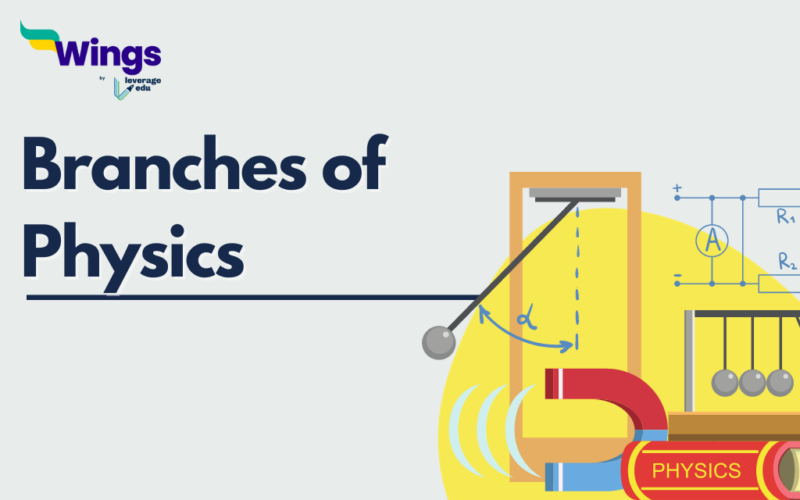Science is an extraordinarily vast area of study comprising multifarious branches and different subjects. Each of the science stream subjects has its own importance in the world at large. There are three primary subject areas of science, i.e. Physics, Chemistry and Biology. Every other branch of science is born of these three primary subjects. When comes Physics, is a vast domain of study in itself with an array of branches to explore. This blog brings you a comprehensive guide on the prominent branches of Physics you must know about.
[powerkit_toc title=”This Blog Includes:”]Download the Branches of Physics PDF here!
What is Physics?
Physics is considered to be one of the primitive subjects and academic disciplines to be discovered. It encompasses the study of matter, its motion and behaviour along with energy and force. As a vast discipline, it intersects with many different subjects and disciplines such as biophysics and quantum chemistry. Physics very often defines a wide range of principles and methodologies studied by other areas of science. It also suggests new areas of research for other academic fields, even mathematics and philosophy.
What are the Main Branches of Physics?
Physics is constituted of many interdisciplinary subjects and branches for those interested in making a career in this field. Here are all branches of Physics:
- Classical Physics
- Modern Physics
- Nuclear Physics
- Atomic Physics
- Geophysics
- Biophysics
- Mechanics
- Acoustics
- Optics
- Thermodynamics
- Astrophysics

Now, let’s get to know more about these varied specialisations of Physics:
Classical Physics

Among the popular branches of physics is classical physics. It primarily deals with different laws of motion and gravitation. These theories were conceptualized by Sir Isaac Newton and James Clark. They are Maxwell’s kinetic theory and the theory of thermodynamics. This branch of physics is concerned with matter and energy. Classical Physics can simply be termed as Physics which dates back to 1900 and before. Everything that came under the discipline of physics after that era, that is after 1900, is considered to be modern physics. In classical physics, energy and matter are dealt with separately. As a general belief, the theories which are termed invalid in modern physics are immediately considered to be a part of classical physics.
Explore: Physics Project for Class 12: Topic List (Download Free PDF)
Modern Physics

Modern Physics is primarily centred around the two theories of relativity and quantum mechanics. Albert Einstein and Max Plank are the pioneers of this branch of physics. They were the first to propound the theory of relativity and quantum mechanics. Unlike the classical branch of Physics, the branch of modern physics doesn’t consider energy and matter as different entities. Here they are only called the two different forms of each other.
Nuclear Physics
This is a branch of physics that is concerned with the constituents, structure, behaviour and interactions of atomic nuclei. This branch of physics is different from that of atomic physics. Latter studies the atom, including its electrons. In contemporary times, nuclear physics has become a very broad area of study and extended its scope manifolds. Methodologies and principles of this subject are applied to other academic and research areas. It is used in power generation, nuclear weapons, magnetic resonance, imaging, medicines, and industrial and agricultural isotopes.
Atomic Physics
Another branch of physics is Atomic physics. It is concerned with the composition of the atom apart from the nucleus. It is primarily concerned with studying and understanding the behaviour of electrons in the shells around the nucleus. This branch of physics deals with electrons, ions, and neutral atoms. Among the first and foremost forays into atomic physics was a recognition that all matter is comprised of atoms. The beginning of atomic physics is associated with the discovery of spectral lines. This discovery gave way to an entirely new understanding of the structure of atoms and their arrangement.
Mechanical Physics
This is one of the branches of physics that is concerned with understanding the motion of material objects and how they are influenced by forces. It is also simply called mechanics. It has two main branches Classical Mechanics and Quantum Mechanics. Classical mechanics studies the laws of motion of physical objects. It also deals with the forces that cause the motion. On the other hand, quantum mechanics is the branch of physics that is primarily concerned with the behaviour of the smallest particles, like electrons.
Mechanics
Mechanics is a branch of physics that focuses on the movement and motion of physical objects under a force and when at rest. It studies the relationship between different concepts like force, matter and motion. Forces applied to objects result in displacements or changes in an object’s position relative to its environment. It studies the law of motion, gravitation, friction, displacement and concerts like force, energy and power.
Acoustics
Acoustics is a branch of physics that studies sound. It studies the mechanical waves passing through different forms like gases, liquids and solids. It studies vibrations and focuses on the production, control, transmission, reception, and effects of sound. It studies concepts like vibration, sound, ultrasound and infrasound.
Optics
Optics is a significant Science branch of physics that studies light and its properties. Optics focuses on studying behaviour, properties of light, its interactions with matter and the changes in these behaviours and interactions. The branch studies the behaviour of visible, ultraviolet, and infrared light. There are two branches within the field, Physical and Geometrical Optics. Physical is concerned with the nature of light and other attributes while geometrical focuses on light interactions with lenses, mirrors and other devices.
Thermodynamics
Thermodynamics is a branch of physics concerned with heat and other forms of energy. It focuses on the transfer of energy from one form to another. It was introduced in the 19th century while scientists worked on steam engines. There are three laws of thermodynamics that are the foundation of the branch.
Astrophysics
Astrophysics is an important branch of physics. Space science is a subset of astronomy that primarily studies celestial objects and their composition by applying the laws and principles of physics to explain the phenomenon. The study of astronomy and its branches can be dated back to Greek philosophers like Aristotle who sought to study space and its components but it was Galileo and Newton that transformed the tradition of astronomy and its study. The study of cosmology and planetary science is closely associated with astrophysics and is often referred to as sister sciences.
Top Universities for Physics 2023
If you are planning to study physics on a higher level and work frontline in the field of Physics, then there are a lot of universities in the world that offer undergraduate, postgraduate and PhD/Doctoral Degrees in Physics. Here’s a list of the top universities for physics along with their QS World University Rankings by subject 2023 i.e. Physics:
| University | QS World University Rankings by Subject | ||
| Massachusetts Institute of Technology | #1 | ||
| Harvard University | #2 | ||
| University of Oxford | #3 | ||
| Stanford University | #4 | ||
| University of Cambridge | #5 | ||
| California Institute of Technology (Caltech) | #6 | ||
| University of California- Berkeley | #7 | ||
| ETH Zurich– Swiss Federal Institute of Technology | #8 | ||
| Princeton University | #9 | ||
| University of Tokyo | #10 |
Career Scope
| Branches of Physics | Careers |
| Classical Physics and Modern Physics | Scientist Consulting Physicist Technical Assistant Radiologist Assistant Lab Technician Supervisor Research Assistant Professor |
| Nuclear Physics | Professor Nuclear Physicist |
| Atomic Physics | Atomic physicist Molecular physicist |
| Geophysics | Geophysicist |
| Biophysics | Biophysicist |
| Mechanics | Rheologist |
| Acoustics | Acoustic Consultant Acoustician Acoustic Engineer |
| Optics | Optical and radio astronomer Optical astronomer Optical physicist Optical scientist |
| Thermodynamics | Thermodynamics scientist Thermodynamics physicist Thermodynamicist Product Development Scientist |
| Astrophysics | Galactic astronomer Cosmologists Galactic, planetary, solar, and stellar astronomer High-energy astrophysicist Planetary astronomer Radio astronomers |
Branches of Physics PPT
Related Blogs:
FAQs
The main Branches of Physics are
Classical Physics
Modern Physics
Nuclear Physics
Atomic Physics
Geophysics
Biophysics
Mechanics
Acoustics
Optics
Thermodynamics
Astrophysics
Classical Physics is the oldest branch of Physics.
The two main branches of Physics are Classical and Modern Physics.
Atomic Physics is considered one of the hardest branches of Physics.
Hope this blog has comprehensively explained the popular branches of physics. We hope this meets and satisfies your expectations. Are you looking forward to joining a top-notch educational university for studying physics? Let the experts at Leverage Edu take care of your academic journey. Book your free 30 minutes of e-counselling with the team now and discover new educational possibilities.
-
Physic it’s absolutely a good field in science section
-
This have had changed not even my mind but my whole life,
It absolutely inspired me!-
Thank you, Jason!
-

 One app for all your study abroad needs
One app for all your study abroad needs




















 25,000+ students realised their study abroad dream with us. Take the first step today.
25,000+ students realised their study abroad dream with us. Take the first step today.


10 comments
Physic it’s absolutely a good field in science section
This have had changed not even my mind but my whole life,
It absolutely inspired me!
Thank you, Jason!
Which is the best branch to specialize in for Crime Scene Reconstruction?
Hi, Rae!
We will surely help you in this. Contact us at 1800 57 2000!
Thank you for reading!
Related articles: Physics Syllabus For Class 11
Courses After BSc Physics
BSc Physics Syllabus
Great and wonderful, keep it up
Thanks for reading.
Also, check: BSc Physics Syllabus
Physics Syllabus For Class 11
This is great
Thank you, Monica!
Check out these blogs- https://leverageedu.com/blog/science-stream-subjects/
https://leverageedu.com/blog/branches-of-chemistry/